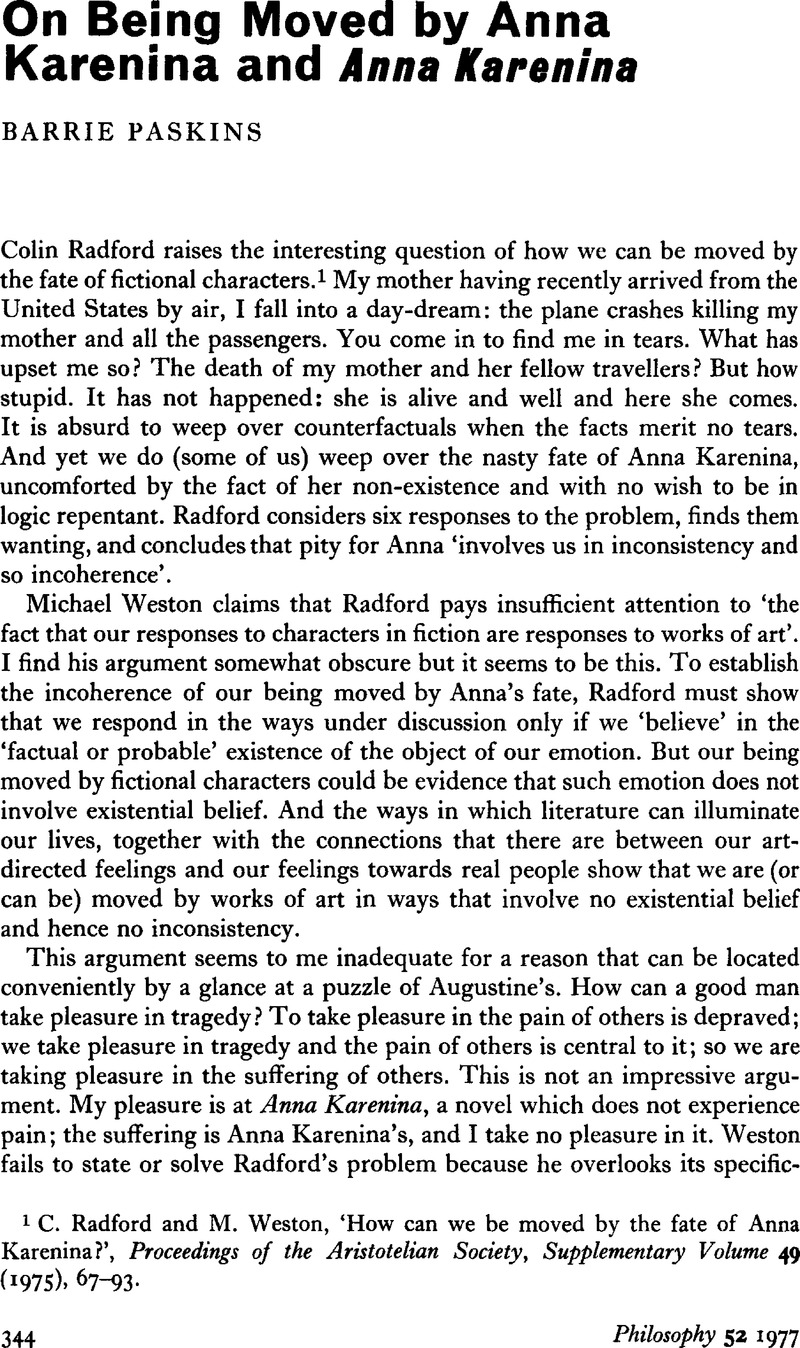Crossref Citations
This article has been cited by the following publications. This list is generated based on data provided by
Crossref.
Radford, Colin
1979.
The Essential Anna.
Philosophy,
Vol. 54,
Issue. 209,
p.
390.
Mounce, H. O.
1980.
Art and Real Life.
Philosophy,
Vol. 55,
Issue. 212,
p.
183.
Lada, Ismene
1994.
‘Empathic understanding’: emotion and cognition in classical dramatic audience-response.
Proceedings of the Cambridge Philological Society,
Vol. 39,
Issue. ,
p.
94.
Wilkinson, Jennifer
2000.
The paradox(es) of pitying and fearing fictions.
South African Journal of Philosophy,
Vol. 19,
Issue. 1,
p.
8.
KREITMAN, NORMAN
2006.
FANTASY, FICTION, AND FEELINGS.
Metaphilosophy,
Vol. 37,
Issue. 5,
p.
605.
Moyal-Sharrock, Danièle
2009.
Emotions and Understanding.
p.
165.
FRIEND, STACIE
2010.
Getting Carried Away: Evaluating the Emotional Influence of Fiction Film.
Midwest Studies In Philosophy,
Vol. 34,
Issue. 1,
p.
77.
Nissan, Ephraim
2011.
The Dog Ate It.
The American Journal of Semiotics,
Vol. 27,
Issue. 1,
p.
115.
Dadlez, Eva
2011.
Ideal Presence: How Kames Solved the Problem of Fiction and Emotion.
Journal of Scottish Philosophy,
Vol. 9,
Issue. 1,
p.
115.
Broussard, Ramona
and
Doty, Philip
2016.
Toward an understanding of fiction and information behavior.
Proceedings of the Association for Information Science and Technology,
Vol. 53,
Issue. 1,
p.
1.
Rodogno, Raffaele
2016.
Social robots, fiction, and sentimentality.
Ethics and Information Technology,
Vol. 18,
Issue. 4,
p.
257.
Doty, Philip
and
Broussard, Ramona
2017.
Fiction as informative and its implications for information science theory.
Proceedings of the Association for Information Science and Technology,
Vol. 54,
Issue. 1,
p.
61.
Konrad, Eva-Maria
Petraschka, Thomas
and
Werner, Christiana
2018.
The Paradox of Fiction – A Brief Introduction into Recent Developments, Open Questions, and Current Areas of Research, including a Comprehensive Bibliography from 1975 to 2018.
Journal of Literary Theory,
Vol. 12,
Issue. 2,
p.
193.
宁, 晓芳
2024.
Reflections on the “Paradox of Fiction” from the Perspective of Affective Cognition.
Advances in Philosophy,
Vol. 13,
Issue. 08,
p.
1805.



